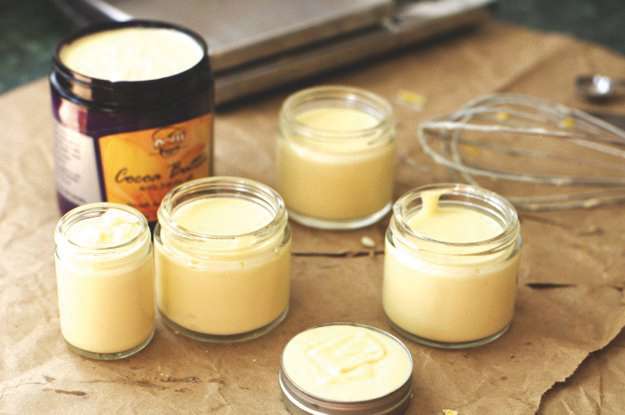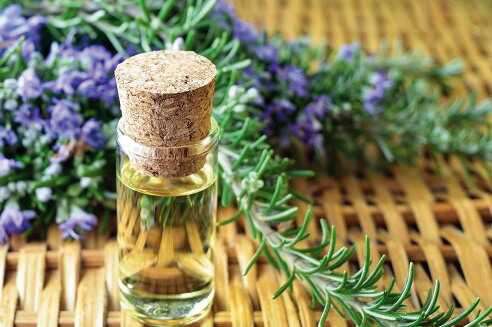
Following on from my article in the August edition, I promised to use this month’s offering to tell you how you can make your own personal care products.
I actually started making my own night cream in about the mid-1980s because horror, the one I’d used for years was being discontinued. It didn’t take me long to realise how easy it was to replicate it, but without any of the synthetic chemicals or perfumes that were in the mainstream animal friendly version (and once you’ve stopped using synthetic perfumes, you’ll be shocked at how they cause you to sneeze, how they irritate your nose and eyes – that’s how strong they really are. You’ll also notice how fake they smell!). Your home-made products will also of course be animal friendly.
I’ve been making my own soap for years and it’s the same story. I make what is termed as “natural soap” which means that I only use botanical plants to colour my soap and I only use essential oils to scent it – and even though I say so myself, it’s wonderful: moisturising and with a gorgeous lather (without any SLSs or SLES as detailed in the previous article).
My message to you is that starting to make your own stuff is much easier than you think and much, and oh wow, so much cheaper.
You can make exfoliators from:
- Ground nuts (I prefer to use ground almonds)
- Porridge oats (in water)
- Set honey
- Sugar
- Ground seeds
- Ground rice
- Just mix to a soft paste with water before applying.
Salt Scrub: I’ve been a big fan of salt scrubs for decades as they moisturise your skin like nothing else. I’ve had a quick look online and Lush’s salt scrub is £20.00 whereas the Body Shop’s salt scrub is £39.99. You can make this for about a fiver or less – seriously!
Method:
- Just fill your container about a third full with oil. I actually use organic sunflower oil, but you can use Sweet Almond Oil, Jojoba oil if you don’t mind spending a bit more,
- then spoon in salt (whatever you do, don’t use salt crystals as you’ll injure yourself!). You can just use ordinary salt if price is a problem and keep adding it until it soaks up the oil.
- If you want to add some essential oil, do so before you add the salt. How much you
- add depends on the size of your container but don’t overdo it as you do need to be careful with some essential oils. That’s it!
Home-made deodorant: I’ve been using crystal rock deodorant for the past couple of decades and it’s great (and literally lasts for years), but if you want to have a go at making your own deodorant, I came across this lovely recipe recently, which is really simple and very effective (I know that for a fact as my daughter made some and says that it’s really good):
Method and Ingredients:
- Fresh rose petals or flower petals of choice in melted (organic if you prefer) coconut oil.
- Allow the coconut oil to set.
- Blend equal parts of bicarbonate of soda and cornflour then mix into the coconut oil as if it were a dough.
- Add your favourite essential oil and transfer to a container.
- To use simply swipe over the surface and spread under the arms.
Hair Colourant
I wrote an article on colouring your hair using henna back in July 2020, so you can look that up in the online magazine archive, but seriously, the amount of chemicals used in mainstream colourants is quite worrying – and potentially carcinogenic. If you’re worried about using henna, fear not! Henna isn’t just red. You can mix colours to get very natural hues (I mix three colours to get a light strawberry auburn colour and my hair is thick and shiny and healthy even though I’m now in my mid-sixties). Give it a try!
Lavender Moisturiser: This is a light moisturiser with obviously a lovely, lavender scent.
Ingredients:
- ½ cup coconut oil
- 1 tsp vitamin E oil
- 12 drops lavender essential oil
- Method:
- Place the jar you want to use into hot water
- Add all the ingredients and mix until the oil has melted and the ingredients have combined
- Allow to cool
Shampoo: As mentioned above, shampoos that we buy generally contain SLS and SLES (even some of the natural, organic ones) and we use them because we like the lathering sensation. However, lather doesn’t make our hair any cleaner than the recipe below (regardless of what the advertising says). As for mainstream conditioners so many of them contain silicones which can really make your hair dull and lifeless. If you have experienced this problem (I know that I have), wash your hair with some bicarbonate of soda which is one of the few things that can remove the silicone. It works a treat!
Ingredients:
- 1 oz herbs (herbs suitable for dark hair include Rosemary and Geranium,
- Garden Sage, Oak Galls, Black Walnut Hull. Herbs suitable for fair hair include Calendula, Chamomile, and Lemon rind) but personally I like lavender and geranium).
- 3 ozs castile soap liquid (preferably unscented).
- 1/4 tsp of carrier oil, for example, jojoba oil, sweet almond oil
- 8 ozs water
- Essential oils (optional)
Method:
- Make a strong infusion of herbal tea with your herbs, cover and leave to infuse for about an hour. Once cooled, strain through a sieve.
- Add the castile soap to the cooled herb liquid and mix gently.
- Add the oil and the essential oils.
- Mix and pour into a container (probably an old shampoo bottle!).
- Shake well before use.
It’s worth adding that mainstream shampoos actually strip the hair of its oils and you may, therefore, find that after using a home-made shampoo that you no longer need to use conditioner.
Sharon Duggan is an Accredited Climate Change Teacher, she also set up and leads both the Cranleigh Climate Action Group and Cranleigh Plant Share (both on Facebook). She also writes on her Facebook page: www.facebook.com/howtoliveagreenerlife












